Australian Tropical Rainforest Plants - Online edition
Syzygium angophoroides (F.Muell.) B.Hyland

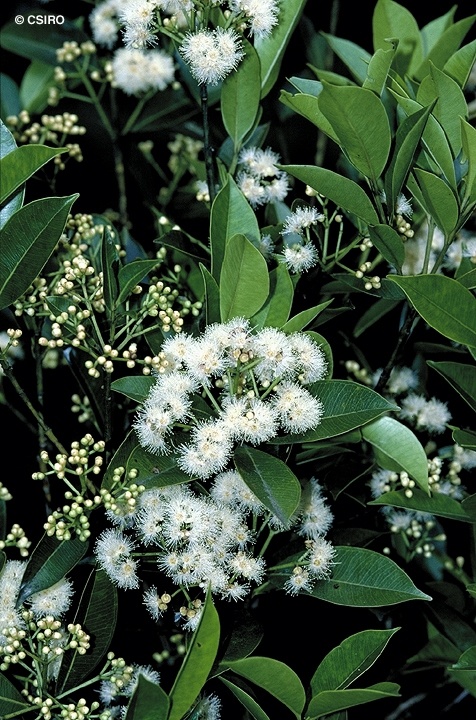
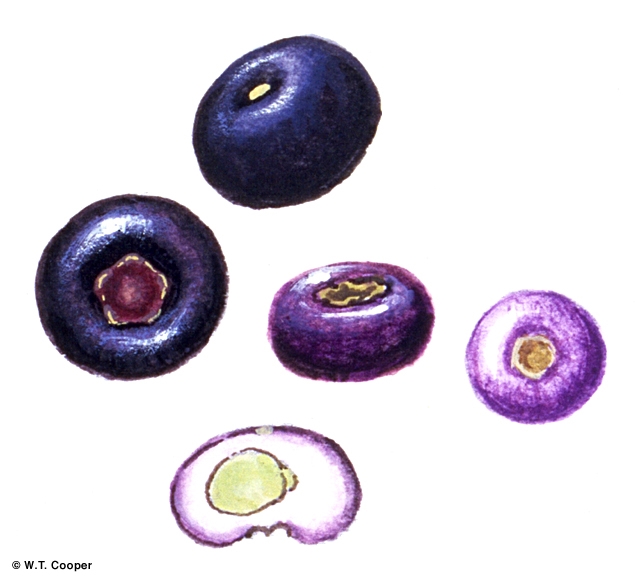
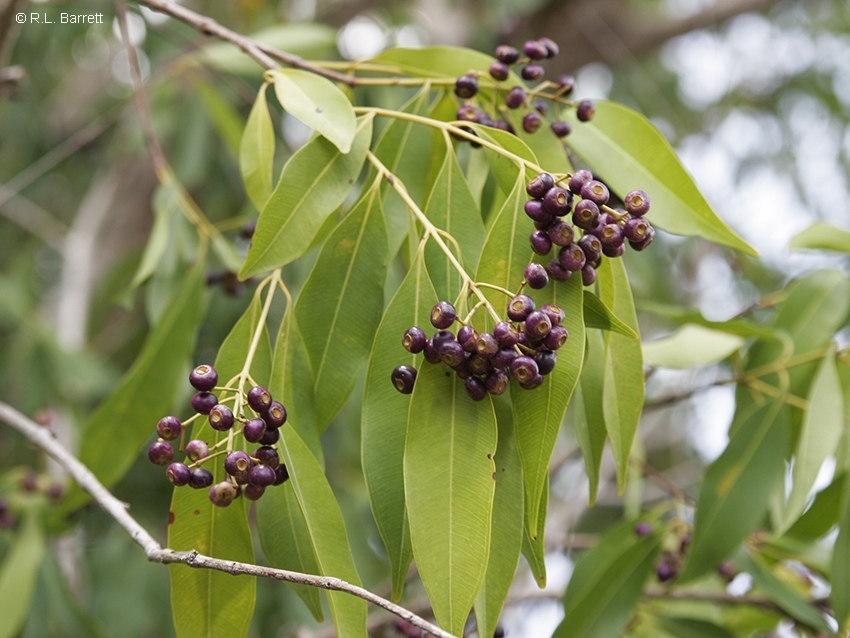
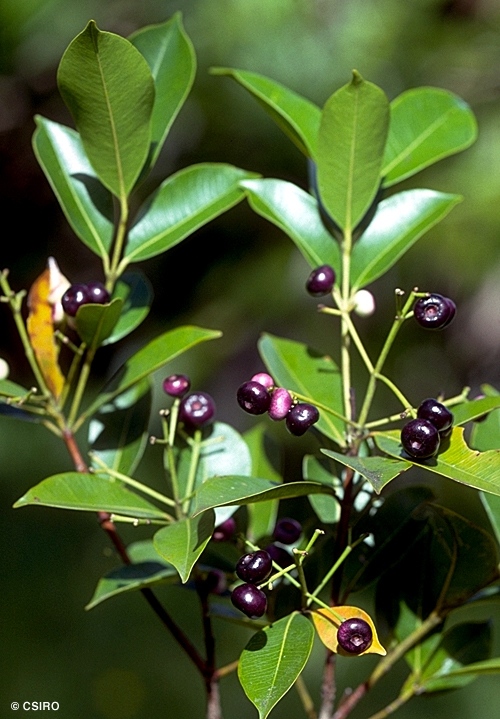
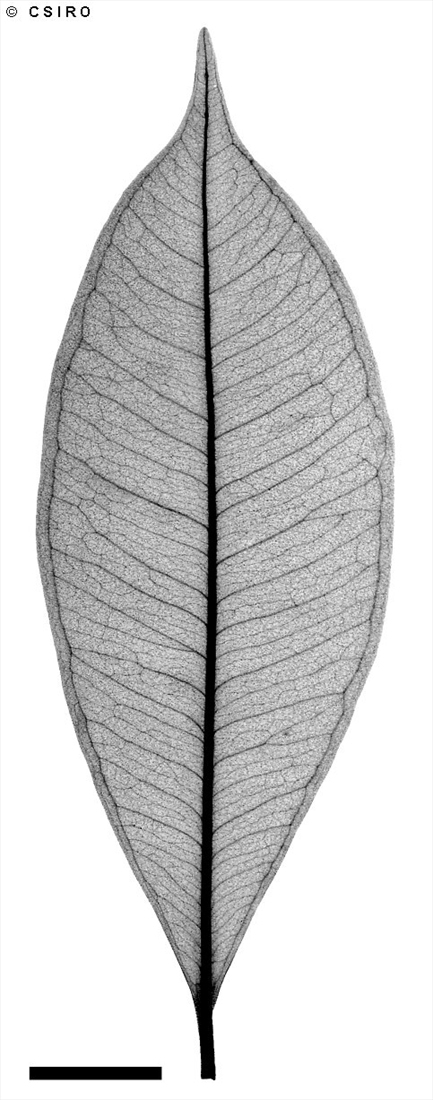
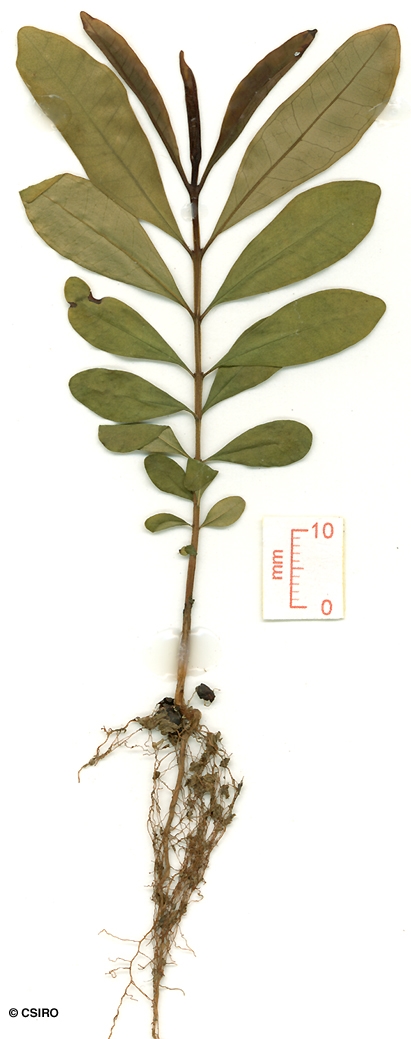

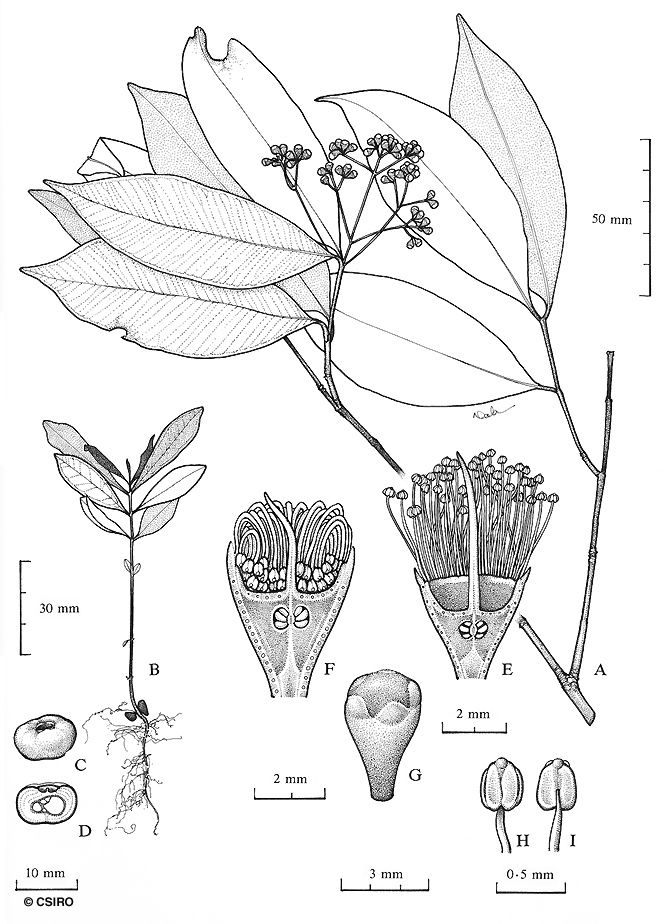
Hyland, B.P.M. (1983) Australian Journal of Botany Supplementary Series 9: 47.
Swamp Satinash; Satinash, Yarrabah; Yarrabah Satinash
Bark usually reddish brown or orange-brown.
Bracts caducous, absent at anthesis. Calyx tube (hypanthium) sessile or tapering into a short pedicel, calyx tube (hypanthium) + pedicel about 2.5-4 mm long, tube (hypanthium) about 2-3.5 mm diam., calyx lobes rounded, about 0.3-0.5 mm long. Petals orbicular, about 3-3.5 mm diam., oil dots about 5-10, confined to the base and middle of each petal. Outer staminal filaments about 3-7 mm long, anthers about 0.3 x 0.3 mm, gland dark, terminal and conspicuous. Ovules about 8-15 per locule, placentas central, ovules radiating. Style about 5-7.5 mm long, equal to or exceeding the stamens.
Fruits globular or depressed globular, attaining about 9 x 13 mm, calyx lobes persistent, small and inconspicuous, about 0.5 mm long, pericarp succulent. Seed attaining about 7-9 mm diam., testa free from the pericarp or easily separated from it and the uniformly textured cotyledons. Radicle lateral, cotyledonary stipules present.
Although frequently growing to a well formed tree of reasonable size, little is known about the timber qualities of this species.
Wood specific gravity 0.90. Hyland (1983).





